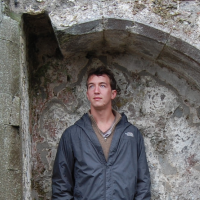Thirty new species have been discovered living in Los Angeles, but residents might be less than thrilled to find that their new neighbors aren’t birds or flowers but tiny insects that resemble fruit flies.
In a paper published this month in the journal Zootaxa, researcher Emily Hartop reports the discovery of 30 new species of phoridae, a family of small flies sometimes called scuttle flies for their habit of scampering across surfaces rather than taking flight.
“It’s an astounding discovery,” Hartop, an assistant collections manager at the Natural History Museum of Los Angeles County, tells me. “It’s right here, it’s right where we live. Thirty new things living right in our backyard!”
While the discovery of 30 new flies in the genus Megaselia is unlikely to captivate public imagination the same way 30 new dinosaurs might, it’s proof of how little we know about animal life in cities.
As in the case of the old woman who swallowed one, the presence of even a tiny fly sends ripples through the ecosystem. Phoridae have been known to eat everything from other insects to decaying flesh, and finding the new creatures a place in the food chain, Hartop says, is the next step in the research.
But beyond determining how these new species fit into the puzzle, there’s the matter of how biodiversity changes our perception of places.
Hartop and her colleagues pulled species from fly traps in 30 locations around Los Angeles County, 26 of them backyards. Even in yards that were otherwise similar — same foliage, same watering schedule — the team found huge variances in fly populations. Explaining why that happens would help scientists begin to tackle a huge question: What enables biodiversity in the city?
Answering that, or starting to, is the goal of BioSCAN, the National History Museum’s research initiative that launched in 2012. Short for Biodiversity Science: City and Nature, BioSCAN is run by Hartop’s boss and co-author, the entomologist Brian Brown. That 30 new species were found in just three months of sampling is a good indication that L.A. is a far richer natural environment than previously thought.
What if you could map urban biodiversity the way birders put down color bands? What would the result tell you about the ecology of Los Angeles? And how could you use that information to encourage homeowners and policymakers to help foster a wilder, healthier city?
The discovery of 30 new species, for Haltop, began — as so many great things do — with a close examination of fly genitalia. When she found that many of their specimens couldn’t be easily identified, she gave them names like “troll,” “bunny,” “shark fin” or “Hokusai,” based on the appearance of their reproductive equipment.
With slides of dissected fly parts in her carry-on bag, she flew to Cambridge, England and spent several weeks with Megaselia expert Henry Disney running her specimens past every Megaselia key ever assembled. In the end, each of her 30 species was named after a site that had hosted a flytrap.
Hartop’s discovery is the latest in a recent string of findings that have expanded our knowledge of urban biodiversity. In 2013, a new species of bird was discovered at the heart of Phnom Penh, a city of two million people. Though cities do attract many of the same species — so-called cosmopolitans like rock pigeons and phragmites — each metropolis retains a unique bioprofile. In fact, a city’s ecological fingerprint more closely resembles its natural surroundings than it does fellow cities.
Despite the quick generational turnover in insect populations, Hartop was quick to rule out the possibility that the flies were children of the concrete, evolutionary products of Los Angeles. But no one yet knows if they exist beyond the city or are unique to the Southland.
The most challenging thing, for the researchers, may be convincing Angelenos that having a thriving and diverse population of flies behind your house is a good thing.
“The higher the biodiversity the better,” Haltop says. “Even if people think, ‘Well, I don’t want a bunch of flies in my backyard,’ actually you do. Because if you have higher biodiversity at one level, you have higher biodiversity at other levels as well.”
I told her I thought that might be a hard sell for families who use their backyards for picnics, games or garden parties. She maintains, however, that people can be taught to love flies as much as she does.
“They’re not going to bite you,” she notes. “They’re not going to eat your vegetables.”
What else do you have against the lowly phoridae?
The Science of Cities column is made possible with the support of the John D. and Catherine T. MacArthur Foundation.

Henry Grabar is a senior editor at Urban Omnibus, the magazine of The Architectural League of New York. His work has also appeared in Cultural Geographies, the Atlantic, The Wall Street Journal and elsewhere. You can read more of his writing here.
Follow Henry .(JavaScript must be enabled to view this email address)




_920_518_600_350_80_s_c1.jpg)












